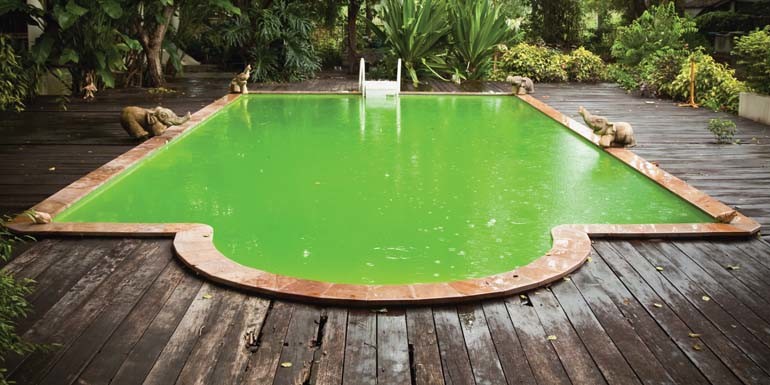
By Connie Sue Centrella
Improving water quality demands a true understanding of what is hidden in the pool and spa environment, of what is lurking beneath the surface—in piping, filters and on exteriors.
For decades, pool professionals have faced a particularly tricky phenomenon, one that has created havoc since the first swimming pools and spas. It is that slimy, sticky, gooey stuff that appears along the tile line, around air jets, on ladders and in the filters, pipes and skimmer baskets found in all pools and spas. For many years, pool professionals assumed this troublesome substance was just residual suntan lotion or body oils. Scientists concerned with problematic environments have another name for it—biofilm.
For the past 20 years, recreational water researchers have been focused on understanding the science behind the troubling affect biofilm has on swimming pool and spa water. The conclusion is that trapped within the slime are disease-causing micro-organisms like algae, bacteria and fungi. The U.S. Centers for Disease Control and Prevention (CDC) estimates 65 per cent of human bacterial infections in aquatic environments involve biofilms.
What is biofilm?
Biofilm, in short, is a collection of microbes living together on a wet surface; it comprises extracellular polysaccharide substance (EPS), which is the slimy goo that encases the organisms and anchors them to a surface. Where there is a wet surface, there is biofilm. Most bacteria grow in biofilms attached to a surface. This is actually experienced in all aspects of living. Plaque buildup on teeth is a prime example; fixtures such as toilets and bathroom basins can also be subject to biofilm contamination. Even leaving an open bottle of water will create biofilm, trapping undetected bacteria beneath its surface.
Pools and spas are an excellent medium for microbes; the wet, warm and nutrient-enriched waters encourage growth. Biofilms harbour algae and water mould as well as recreational water illnesses (RWIs) such as Cryptosporidium, Giardia and E. coli. For example, many spa bathers have experienced the wicked Pseudomonas aeruginosa, commonly referred to as ‘hot tub rash.’ Microbes rapidly re-colonize even within the most well maintained spa environments, allow the bacteria to grow in warm water and shows up as small, itchy red bumps. This annoying skin eruption is a direct cause of biofilm.
Take also the example of black, yellow and green algae, which are microscopic forms of plant life that can be free-floating or attached to a surface. Black algae, the slowest growing of the three varieties, are very resistant to chemicals and can embed itself into the plaster surfaces of a pool or spa. The green algae are free-floating and grow very fast, but are easily controlled with sanitizers and algaecides. Yellow, or mustard algae, appears on walls, mainly in the shade. When the algae is surface-borne, it is much harder to kill. Operators who have examined black algae confirm there is a crusty film or gelatinous sheath over the black algae spore—this is actually a biofilm.
Water mould, on the other hand, has a different structure. It may be called white or pink algae; it may appear to be white, gray or even a tissue paper-like substance. All of these algae are attached to the walls through the biofilm process and can require excessive labour to kill if a preventative maintenance program is not adopted.
Combating biofilm
Fighting biofilm requires an understanding of what it actually is and how to treat it. The need to combat biofilm in the pool and spa environment is vital, as it has a direct influence on chlorine demand; the more biofilm present, the higher the required dosage of chlorine will be. Conversely, as the biofilm diminishes, less chlorine is used.
Unfortunately, conventional methods of microbial control (such as chlorine compounds) have proven inadequate with biofilm. Since it is much harder to kill these organisms once they are established, a constant, preventative maintenance program is the best way to combat biofilm growth.






